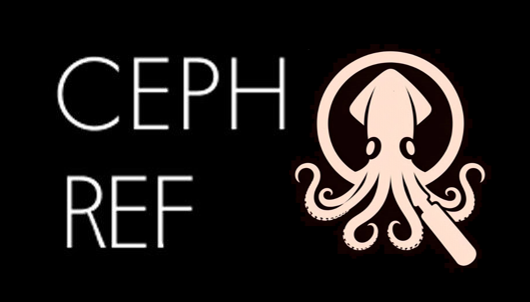Asperoteuthis lui
Asperoteuthis lui is a large chiroteuthid; the largest known specimen has a mantle length of 363 mm. The tentacles of this species are long and slender, with the longest intact tentacles extending 2065 mm. This species is known from a small number of specimens, none of which were fully intact and the smallest was 175 mm ML (however, see "Nesis's new chiroteuthid species"). It appears to have a circumglobal distribution in the high latitudes of the Southern hemisphere.
Asperoteuthis lui differs from other members of the genus by:
1. Club with >> 100 suckers.
2. Club suckers with 5-7 sharp, conical teeth.
1. Arms
a. Suckers with ~ 7-10 teeth on distal half of inner ring; proximal half smooth.
b. Sucker teeth with variable shape depending on sucker position on arm;
suckers at arm base with broad teeth with blunt and rounded tips; sucker
teeth become more slender and pointed with more distal position on arm;
suckers in ~ distal quarter of arm with conical, sharply pointed teeth.
Figure 3. Arm III suckers, A. lui, NIWA 93268, 79 mm CL. Upper guide
indicates position of sucker on arm. Scanning electron micrographs from
Braid (2016).
2. Tentacle Club
a. Sucker-less proximal portion of club bears mostly fused trabeculae on
expanded protective membranes ~ 1/3 of club length, the distal 2/3 of the club, that bears suckers, has short expanded protective membranes.
b. Distal portion of club with ~ 120-180 suckers.
c. Club suckers in 4 longitudinal series (See * under Comments).
Figure. Oral views of the tentacular club of A. lui, NIWA 93268, female,
no ML, 79 mm CL, 5.43 mm LRL. Top - Drawing from Braid (2016).
Bottom - Photograph of fresh club taken by Darren Stevens, NIWA.
3. Tentacle-club suckers
a. Inner ring with ~ 5-7 sharp, conical teeth on distal half; proximal half
smooth.
Asperoteuthis lui
Asperoteuthis lui.html[4/14/25, 3:32:39 PM]
Figure. Club-sucker dentition of A. lui, NIWA 93268, no ML, 79 mm CL.
Left - Lateral sucker from basal region of club showing structure of outer
sucker ring. Medial - Medial sucker from ~ 25% position on club. Right
-
Lateral sucker, also from the 25% position. Note that lateral and medial
suckers are about the same diameter. Scanning electron micrographs
from Braid (2016).
4. Tentacle photophores
a. Midline
of aboral surface of club with five smaller proximal and two larger
distal photophores; the lateral two, at least, have aboral openings.
b. Lateral
margins of aboral surface of club core with small, embedded
photophores; about 11-16 on dorsal margin, about 9-12 on ventral margin.
Figure. Aboral views of the tentacular club of A. lui; same club and
credits as above.
c. Tentacular stalk with ~ 120 knob-like photophores that alternate in size; ~
distal 5% of stalk with only small photophores.
Figure. Oral view of a portion of the tentacular stalk of A. lui, showing
photophores of two sizes. Drawing from Salcedo-Vargas (1999).
5. Head
a. Beaks: Lower mandible
i. Lateral wall fold present.
ii. Height length nearly equals baseline length.
iii. Free crest length shorter than hood length.
b. Beaks: Upper mandible
i. Shoulder step present by LRL 3.3 in corresponding lower mandible.
Figure. Beaks of A. lui, NIWA 93268, no ML, 79 mm CL. Left,
Asperoteuthis lui
Asperoteuthis lui.html[4/14/25, 3:32:39 PM]
middle - Side and oblique views of lower mandible. Right - Side
view of upper mandible. Scale bar - 5 mm. Drawings from Braid
(2016).
c. Eye Photophores
i. Single elongate photophore on ventral surface of each eye.
Figure. Three views of the eye photophore of A. lui, sex ?, NMNZ
M.143859, LRL 6.6, holotype. Drawings from Braid(2016).
d. Funnel-mantle locking-apparatus
i. Funnel component approximately ear shaped; tragus long, low,
antitragus well developod.
ii. Mantle component oval, posteriorly undercut.
Figure. Frontal views of funnel-mantle locking-apparatus, A. lui,
NIWA 93268, no ML, 79 mm CL. Drawings from Braid(2016).
6. Mantle
a. Mantle covered with numerous, circular depressions containing more darkly
pigmented skin.
b. Skin covered with tiny (0.1-0.2 mm high) tubercles (not visible in
photograph below).
Asperoteuthis lui
Asperoteuthis lui.html[4/14/25, 3:32:39 PM]
Figure. Ventral view of the anterior mantle of A. lui. Note the numerous
circular depressions. Photograph by A. Arkhipkin of the freshly caught
type specimen of "A. nesisi."
7. Fins
a. Fins circular in combined outline.
8. Measurements
Table modified from Braid (2016).
Comments
In
contrast to what is given above, the type description described the lateral club
suckers as being larger than the middle ones; this was presumably due to damage
to the type (e.g., sucker rings were absent) which was found in the stomach of a
fish. This and other minor differences are discussed in Braid (2016).
*Both the club drawing
(above), and the photograph on which it is based, seem to
have more than 4 series of suckers. Presumably this is a result of the club's ability
to contract and extend. Typically the oegopsid club has limited
ability is this regard
and there is little confusion over the number of club sucker-series. The clubs of the
chiroteuthid-families may be an
exception to this as they are derived from the
highly contractile/extensile tentacular stalk rather than from a tentacular club (see
the chiroteuthid families page).
The above description was taken mostly from Braid (2016); see that paper for a
more complete coverage of this species.
